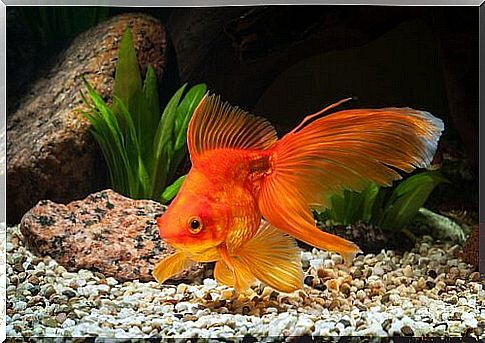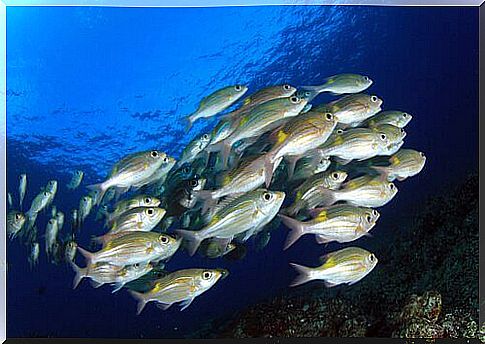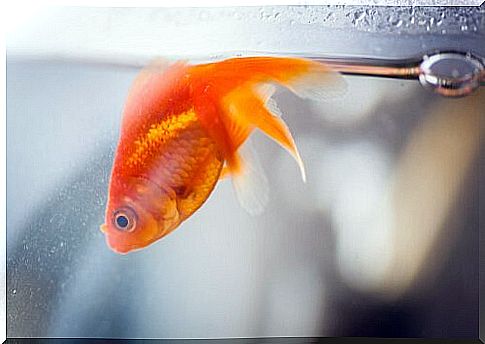What Is A Fish Swim Bladder?

The swim bladder of fish is essential for their life in the water. It is an indispensable organ that allows them to move, avoiding sinking into the abyss. In this article we will explain everything about the swim bladder of fish, an important element of the anatomy of aquatic living beings.
What is a fish swim bladder and how does it work?
It is the buoyancy organ of all bony fish and appears as a kind of “sac”. It consists of two flexible walls, located under the spine. It allows you to control the buoyancy in the water, so that the animal does not have to make a greater muscular effort when it has to move.
This type of “tank”, located in the abdominal cavity, allows them to swim without sinking beyond the depth at which they are. It is also used to produce sounds as if it were a sounding board and, in an emergency, it can also perform a respiratory function.
The structure depends on the different species and on the habitat in which the aquatic animal lives. There are even larger or halved swim bladders. Carp, for example, need more buoyancy due to the weight of their bodies.
Only a few species do not have a swim bladder. This is the case of benthos, or organisms that live in close contact with the bottom or on a solid substrate. Even predators such as sharks do not have them and, therefore, have to move continuously in order not to sink.

It is very curious that the fish fills this organ according to its activities or habitat . Thus, for example, aquatic beings living close to the surface store only 15% of their capacity, while those living in the depths can reach 90%. This is because the percentage of oxygen must be higher as you go down in depth.
Two types of “filling” of the swim bladder
According to the type of swim bladder, it is possible to divide bony fish into two large groups. This differentiation is the result of how they collect and store oxygen:
- Physostomic fish : the swim bladder is connected to the esophagus through a duct, then they bring the head to the surface to inhale and expel it (an example is given by the Koi carp ).
- Physoclistic fish : they use a gland that allows them to add air by taking it from the blood and other capillaries that cover it. They can stay at certain depths and constantly provide the oxygen they need.
In addition to fish, jellyfish also have a swim bladder and use it in the same way, because it allows them to float effortlessly. To do this, however, they must also use the thrust of the water.
Swim bladder disease in fish
If you own an aquarium, one of the main diseases or infections that could affect your fish is the so-called inflammation of the swim bladder, which in many cases is simply detectable with the naked eye.

The main symptoms reveal problems in keeping afloat (the fish stays on the surface for a long time, facing upwards), lack of control of the body, swelling in the ventral area, inability to defecate and loss of appetite.
As soon as swelling is detected, it is important that the animal is checked by a specialized veterinarian who can perform a typical maneuver, using the tip of a needle. Therefore it is essential that the fish be separated from the others to avoid contagion, in case the problem is of bacterial origin and to avoid the spread of a stressful situation.









